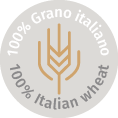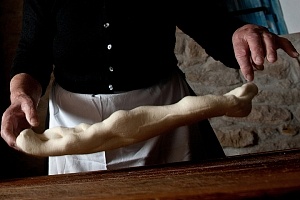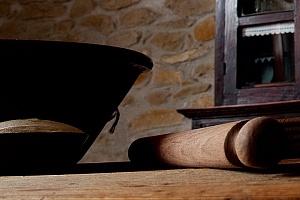The impact wheat has had on the history of mankind is recorded by a series of events that begin with the need to satisfy the nutritional needs of peoples of the world over thousands of years. No other plant has influenced the history of man to such an extent as wheat, from the Neolithic era onwards. Wheat-based products form the very essence of Mediterranean diet, above all, for bread and pasta: the emblem of Italian cooking.
It seems that the original wheat genus was triticum monococcum, a cereal with a small sheaf and a very low gluten content from the spelt family.
Later, triticum dicoccum became popular as its sheaves were larger and it was therefore more profitable. This eventually led to the distinction between hard wheat and soft wheat varieties.
White flour is obtained from soft wheat, which is used for bread-making, sweets, and leavened products. It is divided into various types (00, 0, 01, 02, and wholemeal flour) depending on its degree of refinement at the flour mill, first through grinding, then sieving flour.
Hard wheat, on the contrary, is a type of wheat known as Triticum Durum, which is ground to make durum wheat semolina. This can also be refined to varying degrees that are basically broken down into two types: yellow-hued semolina with harder and coarser grains, and “reground durum wheat semolina”, which is more refined, as it undergoes several sieving phases during grinding.
Articoli correlati
Wheat semolina and production process
GLOctober 11
Our durum wheat semolina
The different varieties of semolina we use in the pasta-making process are...
The History of Pasta
GLJune 21
As Italians, we are known for and appreciate good cooking. We love to spend time at the table...
Wheat semolina and production process
GLOctober 11
Our durum wheat semolina The different varieties of semolina we use in the pasta-making process are...
The History of Pasta
GLJune 21
As Italians, we are known for and appreciate good cooking. We love to spend time at the table...
Search
© Copyright 2024. All rights reserved. P.IVA: 03531860926






